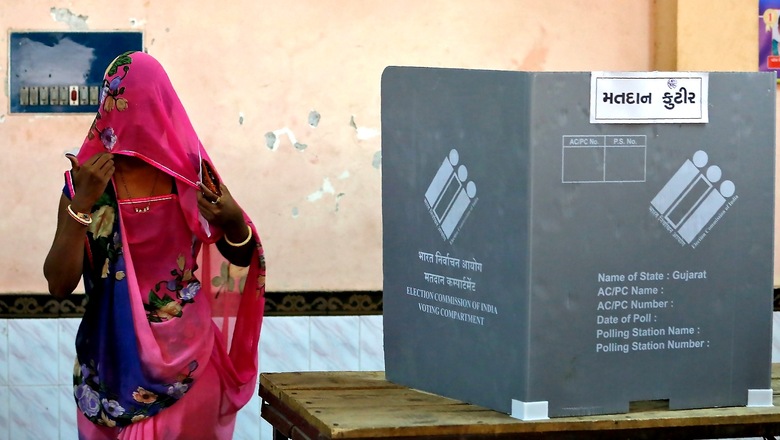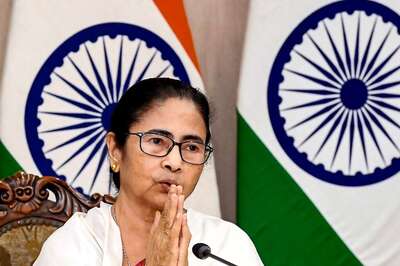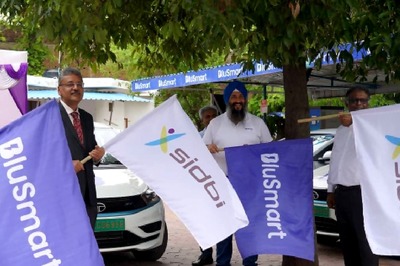
views
Assembly bypolls conducted in the closing months of 2022 are meant to show which way the electoral winds are blowing. This, not only for the various Assembly elections due to take place in 2022 and 2023, but also the general election in 2024.
The BJP is not, it seems, showing signs of anti-incumbency as the conventional political punditry would have it. It is entirely possible it will win handsomely in most of the Assemblies coming up, and garner a third consecutive term for itself with a majority in Parliament in 2024. This, of course, could substantially alter the ground realities as well as the outdated and partisan ideology that has long animated Indian politics to its detriment. It will be seen as conclusive proof that the country and its voters are committed to the BJP vision of a New India and a level-playing field for all its people.
The popularity of Prime Minister Narendra Modi as a pan-India vote-getter remains unparalleled after eight years at the helm. The Opposition is unable to find the enthusiasm to submerge its differences as yet and come together. This cannot pose a serious challenge to the ruling party despite its exclusion in regional pockets of the country, and as yet much of the South. Will this change at all in the remaining two years to 2024?
Not unless there are dramatic and highly damaging Black Swan developments that impact the scene either internationally or domestically. The Ukraine war is indeed very expensive, and is putting enormous strain on the Western European economies and the NATO alliance. It is no doubt putting considerable pressure on Russia too, both in terms of the conduct of the war, and the sanctions it is facing. But Russia has coped rather better than the West so far. Its relationship with India remains very good.
It is, no doubt, a very uncertain world, occasioned by the Covid-19 pandemic and the shifting alignments caused by the Russo-Ukrainian war. More and more countries are beginning to act out of national self-interest, rather than the dictates of formal alliances. This even as the war drags on, with no end in sight, after almost a year.
The Netherlands has removed all sanctions on Russia on a unilateral basis. Germany is reiterating its commitment to China, even as the United States and others in the EU are trying to get away from over-dependence on Chinese supply chains, and its tendency to aggressively leverage its position globally.
India has been adroit in navigating these choppy waters, and has managed to keep its dependence on foreign fuel from overly impacting its domestic economy. It has swiftly replaced all other sources of more expensive oil with that from Russia. It has also been steadfast in its neutrality with regard to Russia in the ongoing war.
The Indian economy has revived quite quickly after Covid, and despite headwinds of imported inflation, is the fastest growing major economy in the world.
Here at home, even as the Prime Minister has been busy campaigning in Gujarat and Himachal Pradesh, the BJP has won four out of the seven multi-state Assembly by-elections in November 2022. It has retained all three BJP seats previously held and added a new one.
It also gave a reasonably close contest in the three seats it lost to three separate parties, in three different states. This probably bodes well for the forthcoming Himachal Pradesh and Gujarat Assemblies, coming up before the close of the year. Both states have incumbent BJP governments that are looking for a new term in office.
In Gujarat, the BJP has been in power continuously for 27 years, no mean feat, and Himachal Pradesh, known for switching horses in each five-year contest, may well retain the BJP government this time around.
Uddhav Thackeray’s rump Shiv Sena has managed to win the Andheri (East) Assembly seat, and claimed, on the strength of it, the people’s support is still with it. The TRS in Telangana won the ‘high-stakes’ Munugode seat by over 10,000 votes, despite feeling the pressure from an advancing BJP in the state. In Bihar, the RJD led by Tejaswi Yadav, with party supremo Lalu Prasad Yadav ailing and mired in legal confinement, hung on to the Mokama seat. However, the RJD could not unseat the BJP in Gopalganj.
Significantly, notwithstanding the religion and caste-sensitive Bihar election scenario, Gopalganj was won by a Vaishya candidate fielded by the BJP, in what is largely seen as a Muslim-Yadav landscape.
The hotly contested Odisha win in Dhamnagar by the BJP shows the road ahead after the Navin Patnaik era draws to a close.
In UP, the BJP handily won the Gola Gokarannath seat defeating its SP rival by over 34,000 votes.
In Haryana, it won the Adampur seat, long held by members of the Bhajan Lal family, since 1968. This, particularly after Kuldeep Bishnoi defected from the Congress to the BJP. It has been won by his son, but this time on a BJP ticket.
The fact that these Assembly bypolls were held in a number of geographically dispersed states, without the BJP losing ground, must be a source of frustration to the Opposition.
Anti-incumbency is based generally on disenchantment with the work done or lack of it by the incumbent and his party, accusations of corruption, high-handedness, and other such factors. When they fail to operate to unseat the sitting MLA, meritorious as he may be, it points to a new phenomenon in Indian politics. It is the vision of the prime minister and the overall development of the country under BJP rule since 2014 that is playing a part, even in assembly bypolls. This is a departure from the emphasis on local issues typically, and the effect of money in political campaigns.
Another aspect is BJP’s skill in terms of ‘social engineering’, and its formidable booth level management, evident in both the Gopalganj and Adampur seat wins.
The TINA factor is also playing a part. The effect of KCR from the TRS projecting national ambitions has failed to take off. The political dividend from Rahul Gandhi’s container-supported padayatra is unclear. Mamata Banerjee remains boxed into West Bengal, and MK Stalin is confined to Tamil Nadu. Maharashtra shifting to the Shinde led Shiv Sena and the Fadnavis anchored BJP, has delivered a vital blow to Sharad Pawar as the elder statesman of opposition unity. The image of the AAP has suffered from multiple corruption charges and bad governance in Delhi and Punjab, despite immense propaganda campaigns via advertisements in print and the electronic media.
A recent India TV-Matrize opinion poll predicted a nearly two-third victory for BJP (119 out of 182 seats), in Gujarat. It is an improvement in its grip since 2017. It is also slated to win comfortably in Himachal Pradesh, bagging 41 seats out of 68, to its 44 in 2017.
This is what happens when the flaws and shortfalls in the BJP administration are overlooked in favour of the overarching good it has done. So even as high food prices, unemployment, and other factors plague the Indian people, there has been much progress that has already brought India into 5th place as a global economy. There is every credible possibility for it to gain the 3rd slot by 2028 or 2030. This is a massive projected achievement, and the people of India wish to support it.
The writer is a political, economic and strategic affairs writer. The views expressed in this article are those of the author and do not represent the stand of this publication.
Read all the Latest Opinions here




















Comments
0 comment